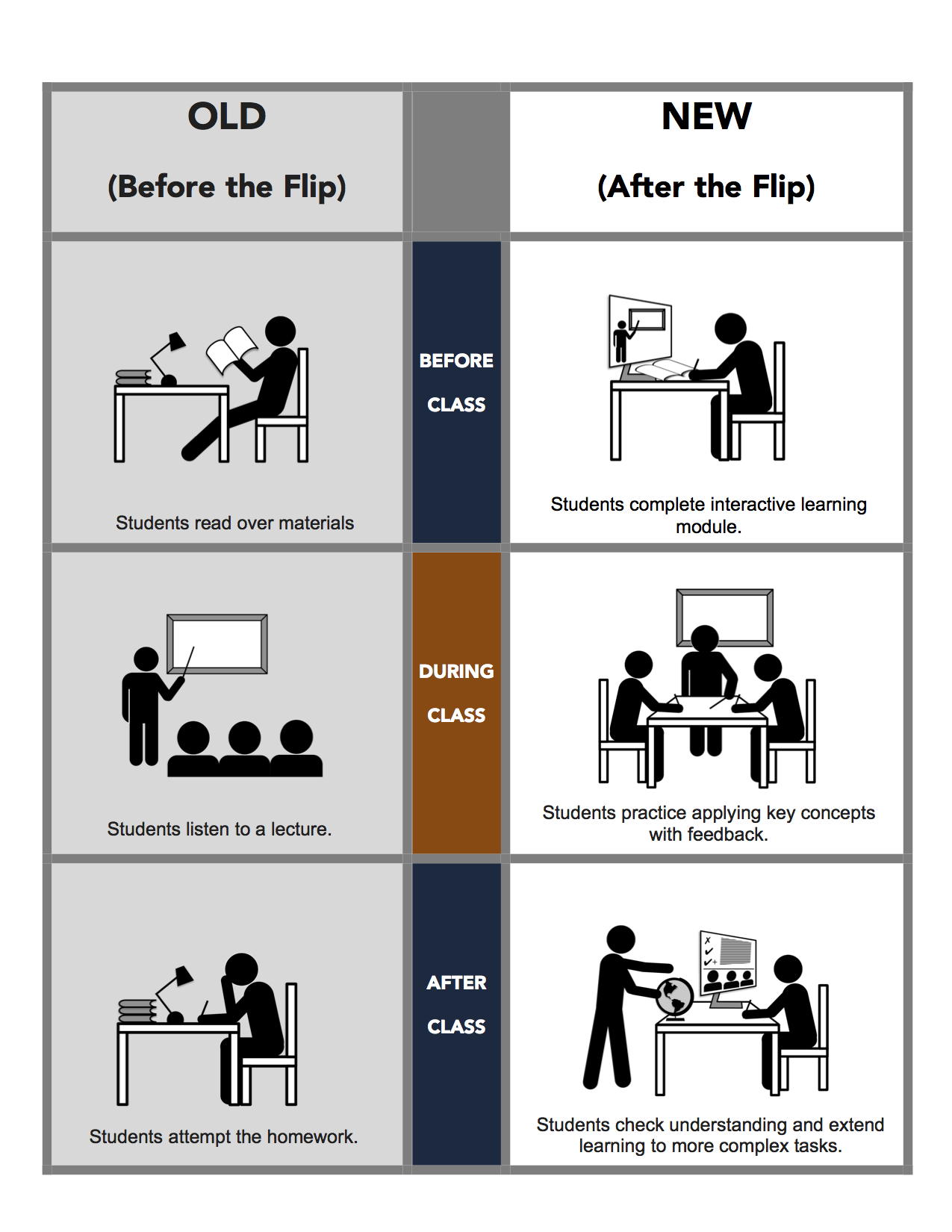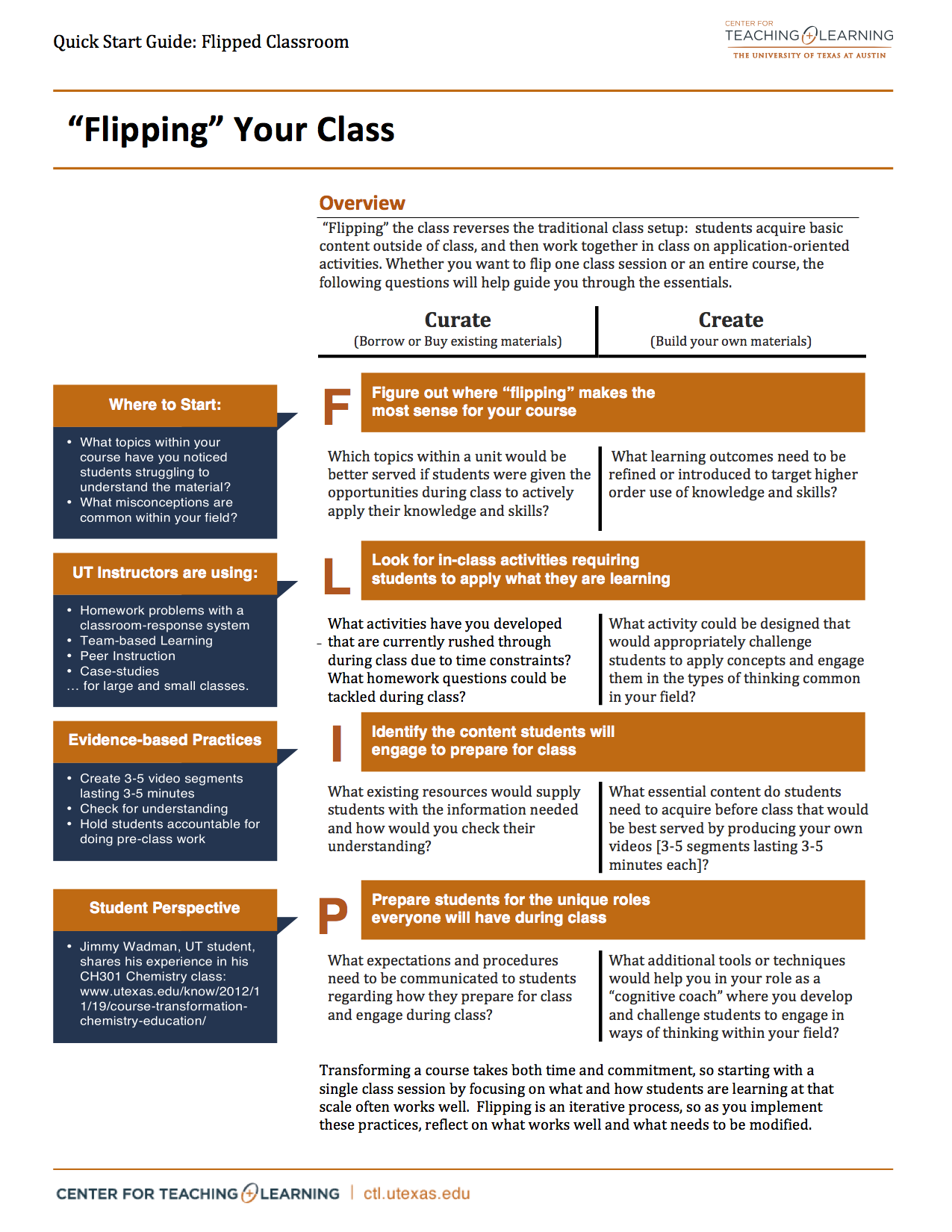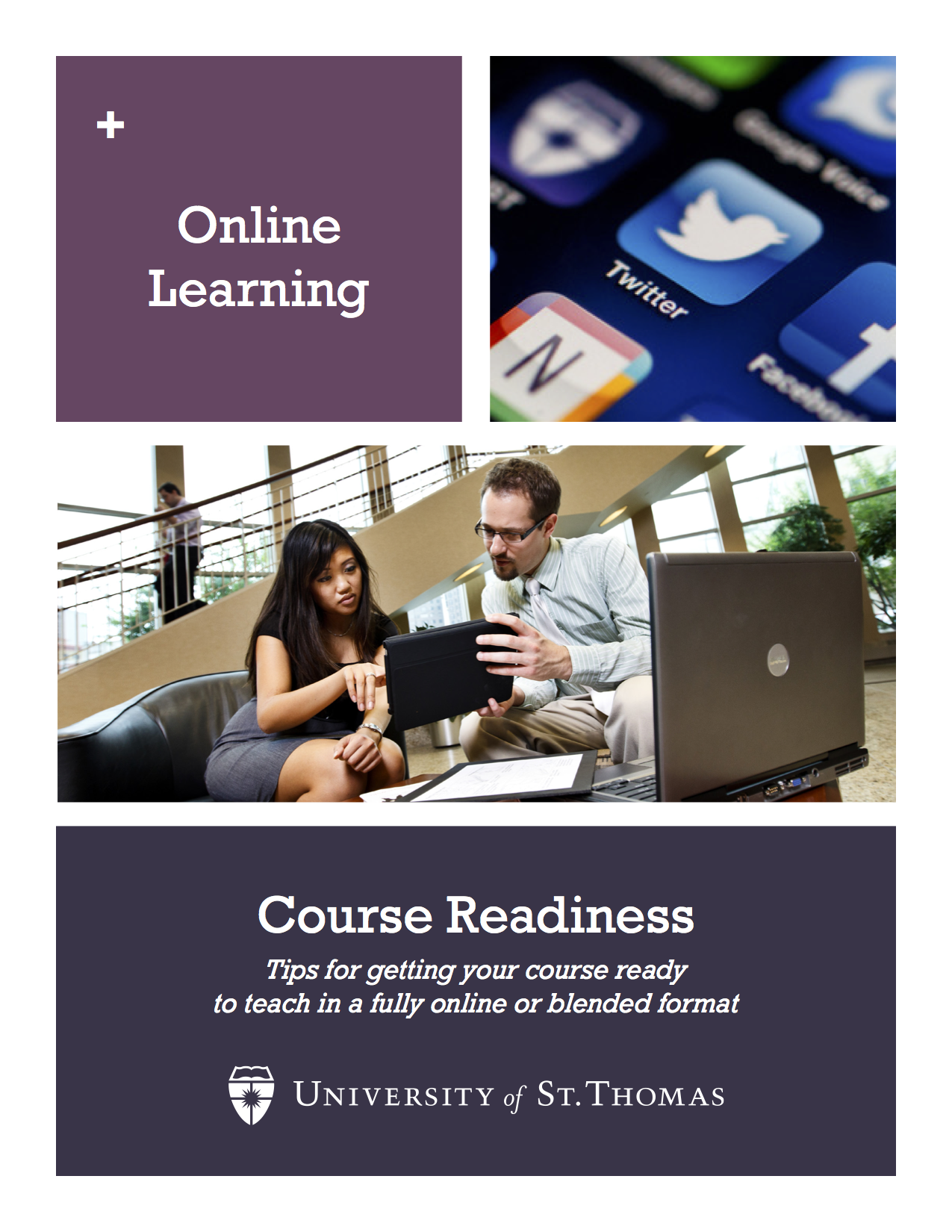This video discusses the need to align the key components of your instruction: learning objectives, teaching strategies, learning activities, and assessments. It explains what instructional alignment is, provides examples, and explains why it is important.
Designing Your Course to Achieve Alignment
Distinguishing Flipped from Blended Learning
The Faculty Development Center at the University of St. Thomas shares this great explanation by Francine Glazer in her book Blended Learning: Across the Disciplines, Across the Academy of the differences between flipped and blended learning that I wanted to share in its entirety:
“A flipped or inverted class is a form of blended learning. Whereas a flipped course doesn’t reduce the number of face-to-face classes or the amount of time the class meets in person, a blended course typically has fewer in person classes. In a blended course more of the course is taught online and students often have more control over the pace and time as they work though the course. The differentiating aspect of blended learning is that a significant portion of the course occurs in two areas: online and in person. Blended course design involves re-thinking the course activities so that there is a “seamless” transition between the online and in person classes — the blending of the in person and online activities reinforce each other to create a single, cohesive course.”
Flipped Classroom Resources from UT Austin
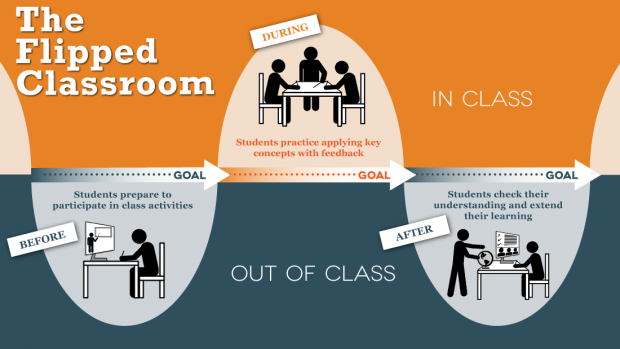
The Center for Teaching and Learning at the University of Texas at Austin has developed some outstanding resources for faculty interesting in “flipping” their classroom instruction.
What is a flipped class?
This 1 minute video introduces the flipped classroom model of instruction.
What is a flipped class? from UT Austin CTL on Vimeo.
A flipped class is one that inverts the typical cycle of content acquisition and application so that
- students gain necessary knowledge before class, and
- instructors guide students to actively and interactively clarify and apply that knowledge during class.
Flipped Classroom Quick Start Guide
How to Flip a Class
The videos and recommendations with guiding questions on the UTAustin CTL website, walk you through the steps of flipping a single class; the process is scalable for flipping portions of each unit or an entire course.
Thank you to the UT Austin CTL for developing and sharing such a comprehensive set of flipped classroom resources!
TOPcast: Teaching Online Podcast
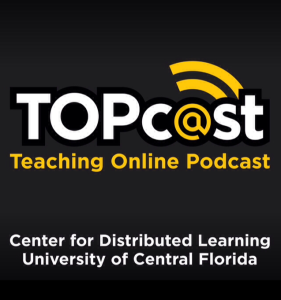 The Center for Distributed Learning at the University of Central Florida has launched the Teaching Online Podcast (TOPcast) hosted by Dr. Thomas Cavanagh and Dr. Kelvin Thompson, a monthly podcast for online and blended learning professionals. Tom and Kelvin are rockstars of the online and blended learning world with decades of experience growing and learning blended and online programs. In their podcast they discuss current issues in online and blended learning relevant to leaders and practitioners. Any online instructor, instructional designer, or aspiring online learning leader will find benefit from the insights shared. You might also learn something new about different coffee blends in the process 🙂
The Center for Distributed Learning at the University of Central Florida has launched the Teaching Online Podcast (TOPcast) hosted by Dr. Thomas Cavanagh and Dr. Kelvin Thompson, a monthly podcast for online and blended learning professionals. Tom and Kelvin are rockstars of the online and blended learning world with decades of experience growing and learning blended and online programs. In their podcast they discuss current issues in online and blended learning relevant to leaders and practitioners. Any online instructor, instructional designer, or aspiring online learning leader will find benefit from the insights shared. You might also learn something new about different coffee blends in the process 🙂
You can share with the hosts your thoughts on past episodes or ideas for new episodes via email (topcast@ucf.edu), follow on Twitter at @topcastnow, or join the conversation on Twitter with the hashtag #topcastnow. Subscribe (via iTunes or RSS) to never miss an episode.
Course Readiness: Tips for getting your course ready to teach online or blended
The University of St. Thomas Information Resources and Technologies and Faculty Development Center have created this excellent guide for faculty on how to structure a course for online learning and addresses both fully online and blended/hybrid delivery methods. There is a checklist at the end of the booklet to assess your “course readiness,” and to help minimize any problems your students may incur as they acclimate to the online material, navigate the course and complete online activities.
Also included is assistance for incorporating active learning strategies to help you plan your class time more efficiently and to assess where students are in understanding the material. Lastly, the basic tenets of how to design for accessibility, especially if you are using the Blackboard learning management system, are introduced.
